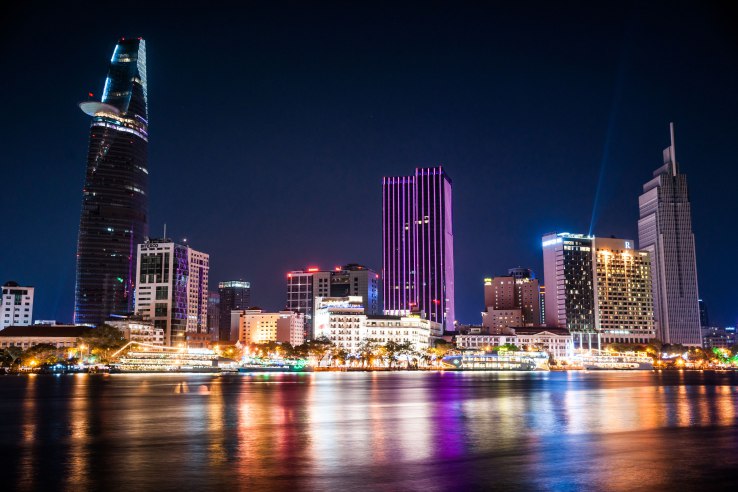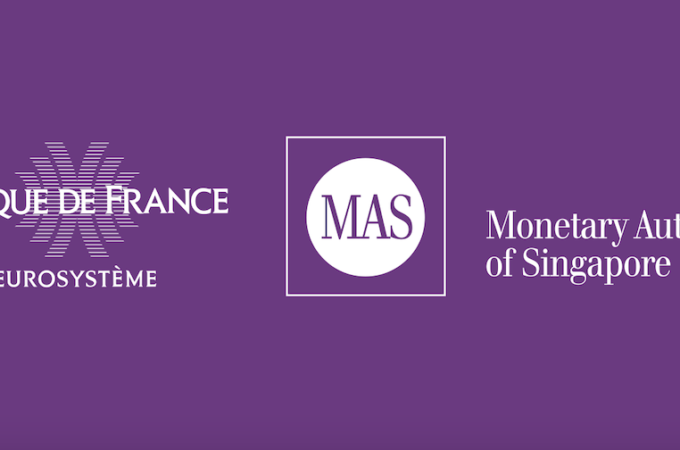
Can Emerging Nations Create Their Own Silicon Valleys?
Silicon Valley has dominated the fields of technology and tech investment for the past two decades, operating virtually unchallenged during the zenith of its power. But the investment landscape is changing, bringing shifts in a number of factors that are edging out the major player in the technology investing game — and disrupting its domination of the playing field during the next one or two decades.
According to Alec Ross, other nations around the world should give up trying to create their own versions of Silicon Valley. In his view, “It’s too late. Silicon Valley has a decades-long head start creating the perfect environment for creating Internet businesses.” Instead, he believes, emerging nations should stick to their own areas of “domain expertise” — which he defines as “deep knowledge about a single industry.” They should embrace these domains, rather than the Internet kind, leveraging “big data” to innovate in these areas.
Even as he refers to “rising hotbeds of innovation around the world,” he relegates those hotbeds to working within their own limited domains, effectively stifling their freedom of choice in selecting the areas where they themselves would opt to innovate. At the same time, Ross sings the praises of “Silicon Valley ‘s influence,” which, he says, “lingers and continues to draw start-ups in almost every industry.” Sounds a lot like elitism dressed in the garb of “equal opportunity.”
A truly level playing field would encourage innovators to work in their own areas of passion, preference, need and skill — whatever they may be — where they can use that big data Ross recommends to create new and wonderful innovations that could very well rival those of the Valley. With a whole world of possibilities open to them, there’s no reason why these talented pioneers should not be able to create the same kind of “self-perpetuating cycle” of innovation that Silicon Valley has built.
Impact investments: present and future value
According to a piece in Harvard Business Review, impact investments — investments allotted to companies that are expected to generate positive social and environmental returns, along with their monetary ones — are expected to grow from their current $60 billion asset value to $2 trillion in invested assets over the next decade. These are assets that will be available to, from and for emerging nations worldwide to help innovators do good while making good.
In every country of the world, the impact investment category holds many possibilities for bettering the world while also growing monetary returns.
Clearly, impact investing is on the rise globally. And yet this $2 trillion market — as huge as it is — is still assessed to represent just 1 percent of global invested assets. Why is that? Surely it isn’t because few people have any desire to better the world when they invest. As education about impact investing increases, in an investment arena that many tend not to understand, the potential for this percentage to rise to even higher levels will increase.
The existing roadblocks to encouraging investors to allocate a larger portion of their portfolios to impact investments around the world also extend to assessing the actual value of already existing conscience-based investments.
Because there are so many differing views on which types of offerings actually constitute impact investments, the lines delineating the boundaries of this investment category can be difficult to draw, making it equally difficult to get an accurate picture of its true size — meaning it’s likely already far larger than we think, with the potential for even more explosive growth as ever-larger numbers of investors are coaxed into entering this exciting investment field.
In every country of the world, the impact investment category holds many possibilities for bettering the world while also growing monetary returns. And it all boils down to a phenomenon called opportunity.
Domestic investment activity and growth
Silicon Valley is clearly at the pinnacle of investments — both impact and otherwise — in sheer number and dollar volume of deals. However, that’s where its ascendancy ends. In terms of relative investment activity between 2014 and 2015, and average annual rate of growth (AAGR) over the past four years, the Valley/Bay Area has not fared as well.
Bay Area/Valley investment activity in 2015 showed a decrease of 1.335 percent in comparison to 2014, ranking 15th in a pool of 17 cities whose investments were ranked by Mattermark, whereas the top 10 cities experienced increases ranging from 20.07 percent to 200 percent, and the average increase of all 17 cities was 18.987 percent.
Based on average annual rate of growth, Mattermark found the Bay Area to be relatively deficient, as well. Calculations showed that from 2012 to 2015, inclusive, the Bay Area — at an AAGR of 2.186 percent — achieved less than half the average of the 17 cities’ AAGRs, which it calculated at 4.656 percent. Comparatively speaking, in this pool of 17 cities, the top three achieved AAGRs of 14.614 percent to 20.545 percent, placing their AAGRs roughly 10-15 percent higher.
Value versus growth in Silicon Valley and abroad
The above numbers demonstrate that while Silicon Valley is definitely a “value” player/destination, it falls far short of being a “growth” player/destination — a critical requirement at this juncture and one that is being more than adequately fulfilled by a steadily rising class of players in emerging markets around the globe.
For example, China (which features the three largest global IPOs of all time and can claim the distinction of having the largest number of female billionaires in the world), India (which currently produces some 2.75 million software developers, a number that is expected to jump by 90 percent to 5.2 million in 2018, surpassing the U.S.) and even Vietnam (which has become one of the fastest-growing markets in the world, going from 4 million to 40 million Internet users and from virtually no smartphones to 30 million over the past 10 years). The emerging nation even has an initiative to create its own version of Silicon Valley, called Saigon Silicon City.
There’s simply no room in the global tech landscape for the Silicon Valley elitism that quashes innovation and destroys equality.
These nations — and others — are distinguishing themselves in markets that have only begun to emerge in the last decade, meaning they aren’t very far behind the Silicon “king,” who took two decades to fully ascend the tech throne. Yes, the King has about a 10-year head start. However, these nations are serious contenders — either individually or collectively — to dethrone the currently reigning tech monarch.
Another example of an emerging nation that is making a name for itself in the race to birth its own “Silicon Valley” is Indonesia. Bandung, the Southeast Asian nation’s third-largest city, after its capital Jakarta and No. 2 city, Surabaya, has its sights set on making it a startup-friendly place that will attract tech-based companies to join the ranks of the impressive list of tech startups that have already made the city their home base.
A city of 2.5 million residents (as of 2013), 60 percent of whom are under the age of 40, Bandung, like the rest of Indonesia, is home to a highly tech-savvy, Internet- and mobile-oriented population, and is strategically located in a country where 96 percent of the population use social media — a higher rate of adoption than any other country on earth. These are just a few among many factors that place the city in a good position to win at the technology game.
The city’s “Silicon Valley” project, called Teknopolis, is an ambitious undertaking, supported by Indonesia’s tech-friendly government, and is a project that has hefty investment capital and a great deal of government support backing it.
Will it succeed in becoming the “Silicon Valley” of Indonesia? Ross — and others — would say no. But, only time will tell — and whether or not it does, this tech-centric nation certainly has every right to try. After all, isn’t that what innovation is all about? Whatever the outcome of this particular “Silicon Valley” project, it will not change the fact that the currently reigning king may very well be on his way out.
Related Articles
In Global Startup Ecosystem Ranking, Silicon Valley Slips, While Southeast Asia Gains TractionIndia is morphing into a global R&D hub, but can it ever take on Silicon Valley?China’s Startups Can Break New Ground By Focusing On Niche Markets, Says VP Of DJI
It might be said that the original Silicon Valley — like every industry, technology or empire before it — is reaching the end of an S-curve — one that it may no longer have the momentum to sustain in that highly coveted upward trajectory. Many believe the Valley lacks the ability to re-engineer itself and make the critical shift to the next S-curve that it would require to maintain its ascendancy. But, perhaps even more importantly, external (aka “global”) conditions just happen to be right for a new king to be crowned.
And just as the mighty giant, Goliath, fell, despite his size and power and brazen self-confidence, Silicon Valley has arguably passed the point of no return, and may soon be taken down despite its own self-aggrandizing over-confidence and swagger, by one of the smooth, innocent-looking stones from a foreign stream.
Innovation minus elitism yields equality
On Bloomberg’s recent list of the world’s most innovative economies, the U.S. ranked No. 8. South Korea was No. 1, with slots 2-5 filled by Germany, Sweden, Japan and Switzerland, respectively.
With the U.S. outranked by seven other nations, there’s simply no room in the global tech landscape for the Silicon Valley elitism that quashes innovation and destroys equality. There may be only one Silicon Valley — made up of “some 28-year-olds in California” who are waiting for their opportunity to step in and pull the rug out from under the other innovators of the world. But that doesn’t mean the rest of the world will continue standing by, letting them do it.
After all, H.G. Wells’s “adapt or perish” maxim can cut both ways.
the article first appeared in techcrunch.com





